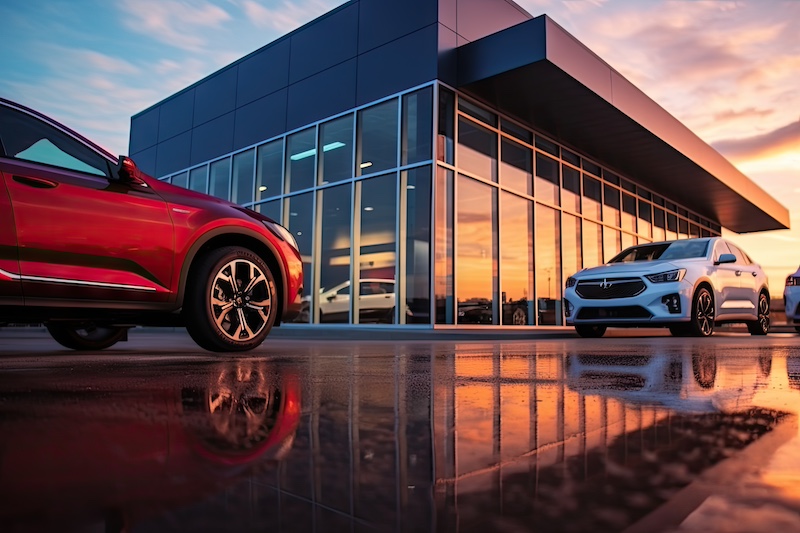How long will this imbalance last?
Over 340 people attended my NADA workshop dedicated to the current buy/sell market. Based on that attendance level and the confident mood at NADA, it appears deal making is back. So, if dealers are in deal mode, why aren’t we hearing about more buy/sells? Presidio’s recent conversations with both buyers and sellers lead us to believe there is a supply/demand imbalance in the market today. There are currently more buyers than sellers.
Why is this? First, let’s look at the buy side. We at Presidio believe the increase in the number of dealership buyers is driven by the following:
- Access to capital: Buyers, particularly large groups, have increasing access to capital both from the credit markets and their own cash flow. Many groups are experiencing record profit levels, providing liquidity for acquisitions and enabling the support of increased debt levels. Furthermore, buyers are interested in locking in low interest rates today, with the expectation that they will rise in the future.
- Earnings growth expectations: Even with today’s record earnings (see Chart 1), many expect profits to rise further as auto sales grow. Buyers are more confident buying into a growing market with the expectation that the seasonally adjusted annual sales rate (“SAAR”) may reach 16 million in the not too distant future, a 25% increase from 2011’s sales rate.
- Expanded shopping list: With the shift in market share, leading buyers have expanded their shopping list beyond Toyota, Honda, BMW, Mercedes and Lexus. Many are now interested in at least 10 franchises, including Korean and domestic brands.

Chart 1 NADA Average Dealership Earnings and Net to Sales Margin (2003 to 2011) Source: NADA Industry Analysis
Clearly, buyers have good reasons to be bullish. So, where are the sellers? Sellers are hesitant to come to market today for several reasons, including some listed below.
- Survivor syndrome: As Chart 1 so clearly demonstrates, dealers are finally enjoying the fruits of their labor. After three very difficult years, profits have rebounded. Some dealers are putting off a sale because they are enjoying the industry once again and they don’t feel an urgency to exit.
- Expected future growth in blue sky values: A number of dealers have told Presidio they intend to sell within the next two to three years. This timing is driven by their expectation of record or near record profits in the next few years, which they expect will translate into big blue sky.
- Expected future real estate price improvement: Now that commercial real estate prices have stabilized, some dealers are hoping that values will rise in the near term, making up for some of the value lost during the credit crisis. They believe the longer they wait to sell, the more their real estate value will rebound.
- The challenge of leaving the dealer lifestyle: Most dealers dedicate their lives to their businesses and their lifestyles reflect this dedication. Often, their friends, family, travel and free time are related to the car business in one way or another. Some aren’t ready to leave the “dealer life”, even if it is the financially prudent decision for their family and estate.
While some of these reasons may ring true, they are not necessarily great reasons (or excuses) for a seller to wait. As we know, timing is everything when it comes to selling your business. Today, we are in a rare and likely short-lived period in which dealership demand outstrips supply. This creates a strong seller’s market, particularly for successful franchises in good locations.
Economics teaches us that when demand outstrips supply, prices tend to go up. The same economic theory tells us that these types of markets do not last for long. Once sellers see transactions close at premium prices, more sellers enter the market, creating a market equilibrium in which supply meets demand. Sellers then lose some of their edge on the market, as buyers have more acquisition opportunities from which to choose.
Presidio expects the market to reach this type of equilibrium sometime in 2013/2014, when a number of sellers have indicated they intend to enter the market. Once we have reached equilibrium, Presidio expects the supply of dealerships for sale to continue rising, potentially surpassing demand, for the following reasons.
- Ageing dealer body: Many dealers are at, near or past retirement. According to the Pew Research Center, 10,000 Americans will turn 65 every day for the next 18 years. This demographic shift will drive many dealership sales.
- Facility upgrade requirements: While NADA and state legislatures are making a valiant effort to stave off manufacturer’s image requirements, image facilities will push more and more dealers to sell, rather than take on an expensive real estate project.
- Rising taxes: The long-term capital gains rate could increase in the near future, particularly on the wealthy. This may push a number of dealers to sell. (For those that are holding out for a larger blue sky number, consider that some of that blue sky could be eaten up by a future tax increase.)
When more sellers enter the market, we will be reminded that our industry has a relatively limited number of deep-pocketed buyers. Many dealerships and dealership groups are very expensive assets to acquire and require a great deal of capital, even when debt is available. Manufacturers’ limitations both on who can acquire a dealership and how many they can acquire, create a barrier to entry that limits the number of buyers. This structural limitation on the demand side of the market ultimately will put pressure on prices.
In closing, dealers understand the effect of supply and demand on vehicle prices; it is time to apply this understanding to dealership prices. When there is less supply and more demand for dealerships (today), prices tend to go up and the seller has many options. When supply meets demand or even worse, supply exceeds demand, prices tend to go down and the buyer has many options. It’s pure economics! Plan your exit accordingly.








